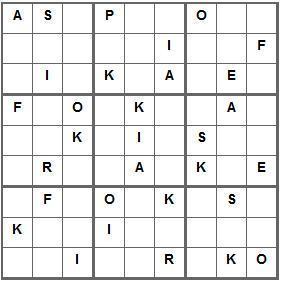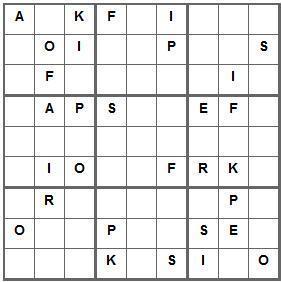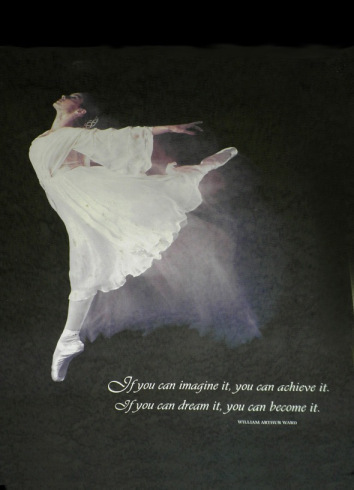Pat Bertram's Blog, page 208
February 1, 2014
I Come From a Narcissistic Family
As a member of a narcissistic family, my childhood was skewed. The following list is from The Narcissistic Family: Diagnosis and Treatment, by Stephanie Donaldson-Pressman and Robert Pressman, and it perfectly describes the dynamics of my early years. The list is taken whole from the Pressman book, but the comments in double parentheses are mine:
_____ I was not allowed to have feelings that might upset my parents.
_____ As a child, I had to meet the emotional needs of my parents.
_____ I learned early on that my needs weren’t valued so stopped trying to get them met.
_____ I felt that I had to act in ways that pleased my parent(s) to avoid being abandoned. ((When I was a teenager, they did kick out a couple of my brothers, so this was a very real fear.))
_____ Our family had to look good to outsiders, so I was required to keep the family secrets. ((It’s not so much that we had to look good to outsiders but that we had an unspoken agreement to keep the secret, which was that we were not the close knit family we seemed. In fact, I am a bit nervous writing about this even now. As if I am doing something wrong. As if I’m “tattling”.))
_____ At times my parent’s need to look good to others did help me get some positive attention. ((I remember my father telling me once that I had to do what he said because he wanted to be able to be proud of at least one of his children.))
_____ I was expected to read my parent(s) mind and give what they wanted without their asking.
_____ If I tried to set limits and boundaries, they were overrun by my parent(s.)
_____ I was not allowed to make mistakes or change my mind.
_____ The less emotional support I got from my parent(s), the more fearful I was that I’d lose it. ((This was true until, as a young teenager, I realized they would never give me the support I needed and gave up expecting it.))
_____ I learned to be super responsible to please my parent(s.) ((Second oldest and oldest girl of a large family. Talk about super responsible! By five, I knew how to do laundry, iron, cook simple meals, wash and dry dishes, sew and embroider.))
_____ The rule in my family was that parent(s) got to do selfish things because it was their right.
_____ I have had life-long problems making and keeping intimate relationships. (Actually, this is not true as far as I can tell. I had an intimate relationship for thirty-four years that ended only when he died. At times, though, our relationship seemed more like a mutual support group since he also was the child of a narcissitic family. He’s the one who helped me to finally see the truth. Apparently, our family secret was so secret, it was even secret from me!)
_____ In relationships, I worry about the other person finding out how defective I am. ((Not any more. My relationship with my now deceased life mate/soul mate taught me that even if someone knew the real me, I could be loved. As for friends, after a lifetime of thinking people didn’t like me, it recently dawned on me that people really did like me. That was an incredible revelation, and has made a big difference in my relationships and in my life.))
_____I have an overwhelming need for external (outside of myself) validation. ((I don’t think this is true so much any more since I am learning to validate myself, but it was true when I was a child and even decades afterward. And for all I know, it could still true. When I did a personality profile for one of the dating sites I signed up for, it said I was looking for “someone who’ll always strive to make me feel attractive, desirable and loved with undivided attention and a sense of physical security. Someone who’ll make me feel young and alive with a flirty manner around you, and who’ll renew my passion for life by opening my eyes to new experiences and opportunities.” Sounds about right.))
_____ I learned to achieve early on to bring glory to my family OR Even though I did well in school, my parent(s) ignored my achievements. ((Yep!!! Straight “A” student here. Never so much as a single metaphorical pat on the head.))
_____ I became fragmented trying to figure out what my parent(s) wanted from me.
_____ It was dangerous for me to recognize and express my own power as a child. (I didn’t recognize I had any power. I’m still struggling with empowerment.
_____ I had no inherent value other that what I could do for my parent(s.)
_____ My parent(s) became hurt or angry when criticized so I learned not to rock the boat.
_____ I had to give up my own sense of self to survive in my family.
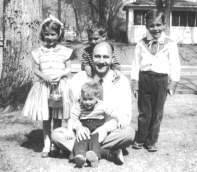 The strange thing to me is that even as a very young child I knew that my parents were doing the best they could. I knew they had their own problems stemming from their own dysfunctional backgrounds, so I didn’t blame them for the situation. It wasn’t until I was in my forties that anger at my upbringing erupted. I was the child, for cripes sake! They were supposed to figure out what was best for me; I wasn’t supposed to figure out what was best for them.
The strange thing to me is that even as a very young child I knew that my parents were doing the best they could. I knew they had their own problems stemming from their own dysfunctional backgrounds, so I didn’t blame them for the situation. It wasn’t until I was in my forties that anger at my upbringing erupted. I was the child, for cripes sake! They were supposed to figure out what was best for me; I wasn’t supposed to figure out what was best for them.
Writing about my narcissistic family background isn’t so much about airing family secrets or putting the blame on anyone as it is an attempt to understand the dynamics of my current situation: looking after my 97-year-old father and doing the best I can for my dysfunctional, homeless, and highly narcissistic older brother.
This is the first in a series of posts where I will be trying to find the pieces to the puzzle, if for no other reason than to free myself from my past and allow me to run headlong into the future.
***
Pat Bertram is the author of the suspense novels Light Bringer, More Deaths Than One, A Spark of Heavenly Fire, and Daughter Am I. Bertram is also the author of Grief: The Great Yearning, “an exquisite book, wrenching to read, and at the same time full of profound truths.” Follow Pat on Google+. Like Pat on Facebook.
Tagged: by Stephanie Donaldson-Pressman and Robert Pressman, external validation, member of a narcissistic family, pleasing narcissistic parents, straight "A" student, super responsible child, The Narcissistic Family: Diagnosis and Treatment


January 31, 2014
Upgrading to a Smartphone
My poor old dumb phone finally decided it had enough of being at my peck and call, and it quit working. Although I have never wanted a smartphone, that’s what I ended up with, and oh, my. I thought the internet consumed time, but that phone could pretty much eat up my days if I wanted it to.
For starters, it took a long time to find my way around and get it the way I wanted. It’s not that the actions were complicated, but in many cases, it was hard to find the instructions.
One of the things I didn’t like was that all texts ended up in the inbox of one of my online email accounts. Yikes. It wasn’t bad yesterday when I had only a couple of texts, but some family members c orrespond with me strictly via text, and I had visions of spending hours deleting such items from my inbox. Also, all contacts from certain email accounts ended up as contacts on my phone, and most of those people I’m not close to. I certainly don’t want to be carrying them with me wherever I go.
orrespond with me strictly via text, and I had visions of spending hours deleting such items from my inbox. Also, all contacts from certain email accounts ended up as contacts on my phone, and most of those people I’m not close to. I certainly don’t want to be carrying them with me wherever I go.
And then there was Facebook. I downloaded the app, got it all set up, even downloaded the app for Facebook pages, then went to add something on the calendar on my phone and found it flooded with events and birthdays from people on FB I don’t even know. I found a way to empty the calendar, but it immediately filled up again. It wouldn’t be a problem since I have never used ecalendars (I’m not always on the computer when I need to check my schedule), but I thought I’d try the one on the phone. I found no way to unsync all the FB info, so when it turned out to be a choice between FB or the calendar, I chose the calendar. So I uninstalled the FB app. If you’re one of my FB contacts, you won’t be inundated with silly status updates. Aren’t you glad?
I found a cool calculator that works like its unvirtual counterpart, and a colorful game — Blendoku. I have always loved the way colors shade and fade into each other, so the game is a natural for me.
I’m sure there are hundreds of other apps that I would find fascinating — for example, I saw an app that supposedly identifies stars and such in the night sky — but for now, I’m limiting myself. The whole thrust of my current life is to live the real world, not the electronic one (though apparently, the so-called real world is also just a series of electrons connecting us one to another).
Still, I will be using the phone for more than making calls. I just wanted to let you know in advance that any errors in my posts and emails are due to the phone. I, of course, don’t make errors. 
***
Pat Bertram is the author of the suspense novels Light Bringer, More Deaths Than One, A Spark of Heavenly Fire, and Daughter Am I. Bertram is also the author of Grief: The Great Yearning, “an exquisite book, wrenching to read, and at the same time full of profound truths.” Follow Pat on Google+. Like Pat on Facebook.
Tagged: Blendoku, FB mobile app, smartphone


January 30, 2014
Spring in January
It seems strange that a time when the rest of the country is undergoing what must seem like eternal winter, here in my temporary abode in the high desert, spring has come. Yesterday was a lovely day, clear skies, still air, 80 degrees (just for a few minutes — it quickly dropped back to a frigid 78). Today was a bit cooler with cloudy skies and breezes strong enough to make me go chasing after my hat a few times, but still, the high of 65 was well within spring temperatures.
The forsythia are already blossoming
And even a few narcissus are preening themselves in readiness for the glory of the coming days.
There is a new moon tonight, ushering in a time of rebirth, so that even if you’re bundled up against freezing temperatures, know that spring will soon be peeking around the corner.
Until then, keep warm, enjoy what moments you can, and try not to be too envious of me in my weather bliss since that’s the only bliss in my life right now. (After ten days of cordiality and even friendliness from my dysfunctional brother, he is back in hyper mode, keeping me awake most of the night and making me as crazy as he is.)
I will use the power of this new moon to break free of the ties of bad relationships, liberate my mind, and hope freedom will follow.
Wishing you an early spring.
***
Pat Bertram is the author of the suspense novels Light Bringer, More Deaths Than One, A Spark of Heavenly Fire, and Daughter Am I. Bertram is also the author of Grief: The Great Yearning, “an exquisite book, wrenching to read, and at the same time full of profound truths.” Follow Pat on Google+. Like Pat on Facebook.
Tagged: forsythia, narcissus, new moon, rebirth, spring


January 29, 2014
Things Are Tough All Over…
Even Santa has to downsize and economize.
***
Pat Bertram is the author of the suspense novels Light Bringer, More Deaths Than One, A Spark of Heavenly Fire, and Daughter Am I. Bertram is also the author of Grief: The Great Yearning, “an exquisite book, wrenching to read, and at the same time full of profound truths.” Follow Pat on Google+. Like Pat on Facebook.
Tagged: humor, Santa's sleigh


January 28, 2014
On Writing: Clean Up Your Mess
One of the biggest problems writers have is editing their work. It’s difficult to see awkward phrases, sentences, even paragraphs since we know what we want to say and so believe we have said it, though readers might have difficulty trying to figure it out. The best way to find such ambiguities is to ask someone to read your book (someone other than me, that is) and have them mark any passages that make them pause or that jerk them out of the fictive dream.
 Other edits, though, are less subjective, and writers should be able to find and correct the errors themselves. The most common non-subjective problem I see in even the most polished works are wrongly used participial phrases that end in ing. According to The Elements of Style by Strunk and White, “a participial phrase at the beginning of a sentence must refer to the grammatical subject.”
Other edits, though, are less subjective, and writers should be able to find and correct the errors themselves. The most common non-subjective problem I see in even the most polished works are wrongly used participial phrases that end in ing. According to The Elements of Style by Strunk and White, “a participial phrase at the beginning of a sentence must refer to the grammatical subject.”
The example in the book is: Walking down the road, he saw a woman accompanied by two children. Who is walking? He is, of course, since he is the subject of the sentence, and the ing phrase always refers to the subject. If the woman is walking, you have to rephrase the sentence: He saw a woman, accompanied by two children, walking down the road. You, I’m sure, would never have to worry about who is walking because you’d never use such an ambiguous sentence in the first place!
The other examples of wrong participial phrases Strunk and White give are humorous and show why it’s important to follow the rule:
Being in dilapidated condition, I was able to buy the house cheap.
Wondering irresolutely what to do next, the clock struck twelve.
As a mother of five, with another on the way, the ironing board was always up.
In case you don’t know how to rephrase the above sentences to make them gramatical and remove the silliness (the first senctence, for example, says that you were able to buy the house cheap because you were in a dilapidated condition), here are my quick efforts:
Because of the dilapidated condition of the house, I was able to buy the place cheap.
As I wondered what to do next, the clock struck twelve.
A mother of five, with another on the way, I was never able to put the ironing board away.
Another ing problem comes from simultaneous actions, when an author has a character do something that’s physically impossible. For example: Pulling out of the driveway, he drove down the street. He cannot be pulling out of the driveway at the same time he is driving down the street. He pulled out of the driveway, then drove down the street.
Such sentence structures do slip into our writing, no matter how careful we are. It’s up to us to clean up the mess and make it easy for readers to stay riveted in our stories. (This is primarily a post about “ing”s, which is good since I seem to be reverting to clichés. That, I know, is something you never do.)
Authors often shrug off the necessity for self-editing because either they believe they have the right to write however they please, or they leave the work to their editors, but the truth is, it is up to authors to get their manuscripts as clean and clear as possible before self-publishing or submitting their book to an editor. As someone who has edited one heck of a lot of manuscripts, I can tell you that having to point out the same error page after page after page gets tiresome.
So, do what you were taught as a child — clean up your own mess.
See also:
Grammar Guide for Self-Editing
Self-Editing — The List From Hell
The Editor’s Blog — A Remarkable Resource for All Writers
***
Pat Bertram is the author of the suspense novels Light Bringer, More Deaths Than One, A Spark of Heavenly Fire, and Daughter Am I. Bertram is also the author of Grief: The Great Yearning, “an exquisite book, wrenching to read, and at the same time full of profound truths.” Follow Pat on Google+. Like Pat on Facebook.
Tagged: copyediting, editing, ing, participial phrases, self-editing, Strunk and White, words that end in ing


January 27, 2014
A Retrospective of Grief
Another 27th. This is the 46th twenty-seventh of the month I have survived since the death of my life mate/soul mate death on March 27, 2010. At the beginning of my grief, each minute, hour, day seemed unfathomably long. I felt as if I lived years during that first month. I still don’t understand how I made it through that eon. The pain started out unbearable and got progressively worse. Each breath took such effort that it seemed as if it would be easier to stop breathing altogether. And yet I continued to breathe, one agonizing gulp of air at a time.
For the first three years, I could feel the grief surging as each twenty-seventh crept up on me, but today I only knew the date by the calendar. Even so, I might not have noticed if I hadn’t advanced his perpetual calendar.
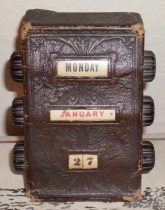 About a month before he died, he told me he wanted me to keep the calendar. It was special to him — a family heirloom and a relic of his childhood — and he didn’t want me to throw it away with the rest of his effects. Which I probably would have done. I thought such calendars silly because if you don’t remember to advance the calendar each day, the calendar loses its effectiveness. He, of course, had the discipline to advance the calendar. No matter where we lived, no matter the state of his health or the stresses of our life, he always advanced the calendar first thing every morning.
About a month before he died, he told me he wanted me to keep the calendar. It was special to him — a family heirloom and a relic of his childhood — and he didn’t want me to throw it away with the rest of his effects. Which I probably would have done. I thought such calendars silly because if you don’t remember to advance the calendar each day, the calendar loses its effectiveness. He, of course, had the discipline to advance the calendar. No matter where we lived, no matter the state of his health or the stresses of our life, he always advanced the calendar first thing every morning.
And now so do I. It has become a way of honoring his life, of remembering him, of being connected to him in a small way. For a long time, I felt connected to him through grief. (Odd, that. It was the feeling of being disconnected from him that grieved me in the first place.) Now that my grief has waned, there is nothing to connect me to him. Unlike many who have lost someone important to them, I have never had a visitation, a sign, any indication that he still exists somewhere. He is simply gone — gone from my life, anyway.
The tears are gone, too.
It seems strange now that I grieved so deeply. I can barely remember loving someone so profoundly that his death tore me apart. Can barely remember that shattered woman who screamed her pain to the uncaring winds. Was that really me or simply a character in the book of my life? (I meant this as a metaphor, but I did write a book about my life, or rather my life of grief. That seems strange, too.)
We live each day as it comes, deal with each pain and sorrow, and somehow, through the years, we become something other than we were. I am no longer a schoolgirl dealing with the small dramas of grades, cliques, unacceptance. No longer a young woman desperately and radiantly in love with a man. No longer an adult struggling to live while her soul mate was dying. No longer a grieving woman.
At the moment, I am thrust in the role of caregiver for my 97-year-old father and homeless brother, but someday, I won’t be this woman, either. I don’t know what will become of me, don’t know what I will become (other than older), but chances are, I still will be advancing that ancient calendar in honor of the life that meant so much to me.
***
Pat Bertram is the author of the suspense novels Light Bringer, More Deaths Than One, A Spark of Heavenly Fire, and Daughter Am I. Bertram is also the author of Grief: The Great Yearning, “an exquisite book, wrenching to read, and at the same time full of profound truths.” Connect with Pat on Google+. Like Pat on Facebook.
Tagged: death of a soul mate, grief at four years, honoring life, honoring the dead, perpetual calendar


January 26, 2014
Is It Cheating to Look at the Solution of a Puzzle Before You’ve Finished?
When you are working a puzzle, such as a crossword puzzle, and you come to the end of what you can do on your own, do you consider it cheating to look at the solution for hints so you can finish the puzzle? Do you see checking the answer as part of the fun of doing puzzles? Or do you abandon the puzzle half-finished to keep from cheating? If you do consider it cheating to check the solution for an answer you have no way of figuring, do you also consider it cheating to ask someone, to use a crossword puzzle dictionary, or to look online for the answer to the clue? Do you find yourself shying away from more difficult puzzles because you can’t do them without cheating?
This has nothing to do with anything, of course, I’m just curious what you think. I did a hard Sudoku this morning and had to check the solution to keep going. I used to consider it cheating to check the solution when I got stuck, but after realizing how many puzzles I wasted by not jump starting the puzzle, I understood it was simply a way of working the puzzle and had wasn’t dishonest.
Just for fun, here are a couple of A Spark of Heavenly Fire Sudoku. You work these exactly as you do number Sudoku, but you use the letters from A Spark of Fire. (A, S, P, R, K, O, F, I, E). If you don’t know how to do Sudoku, you can find the directions here: http://www.sudoku.ws/rules.htm You should be able to print out the puzzles to make them easier to work.
Click here for solutions:
***
Pat Bertram is the author of the suspense novels Light Bringer, More Deaths Than One, A Spark of Heavenly Fire, and Daughter Am I. Bertram is also the author of Grief: The Great Yearning, “an exquisite book, wrenching to read, and at the same time full of profound truths.” Connect with Pat on Google+. Like Pat on Facebook.
Tagged: A Spark of Heavenly Fire, cheating at crosswords puzzles, cheating on word puzzles, puzzles, Sudoku


January 25, 2014
All Is Calm, All Is Bright
All is calm in my world today, and the sun is shining brightly. There have been no storms in my life in the past few days, neither internal nor environmental. There have been no midnight trips to jail to pick up an errant sibling, no recent trips to the hospital to admit my aged father. Nothing has pushed me past my limits to where I wanted to kick someone. I haven’t had any major grief upsurges for a while, not even any minor ones. I’ve been getting enough exercise to keep my stress levels low, and I’ve been catching up on my sleep.
I don’t know how long peace will last in this King of Hearts world of mine, but for now I am enjoying the calm.
It seems strange, though, not to have much to say, especially since the word I chose for my daily resolution is “largiloquent,” meaning “full of words.” (Not a bad thing for a writer to be!) There always seems to be something — or someone — bedeviling me, giving me plenty of fodder for this blog, but at the moment, there are no jumbled thoughts I need to sort out. I have no words of wisdom, either, other than a reminder to myself that the universe is unfolding as it should, and I am where I am supposed to be — dreaming myself into the person I wish to become.
“If you can imagine it, you can achieve it. If you can dream it, you can become it.” William Arthur Ward.
***
Pat Bertram is the author of the suspense novels Light Bringer, More Deaths Than One, A Spark of Heavenly Fire, and Daughter Am I. Bertram is also the author of Grief: The Great Yearning, “an exquisite book, wrenching to read, and at the same time full of profound truths.” Follow Pat on Google+. Like Pat on Facebook.
Tagged: if you can dream it, if you can imagine it, largiloquent, William Arthur Ward


January 24, 2014
Hollywood Treasures
I recently took a trip to Hollywood to search out secret stairs (Secret Stairs (Part I), (Part II), (Part III)) and found many other treasures. Some of these included:
A poinsettia that grew free and wild and unpotted.
A bird of paradise that looked as if it were about to take wing.
Trumpet flowers blaring their beauty.
Indian paintbrush coloring the hillside.
Balconies enough for an entire clan of Romeo and Juliets.
Castles in the air.
Tree trunks that looked as if they had been hand painted by a set designer for greater effect.
Tile work adorning the side of a house.

More welcomes than you can count.
And of course, the Hollywood sign.
***
Pat Bertram is the author of the suspense novels Light Bringer, More Deaths Than One, A Spark of Heavenly Fire, and Daughter Am I. Bertram is also the author of Grief: The Great Yearning, “an exquisite book, wrenching to read, and at the same time full of profound truths.” Follow Pat on Google+. Like Pat on Facebook.
Tagged: bird of paradise, Hollywood, Hollywood sign, Indian Paintbrush, poinsettia, trumpet flowers


January 23, 2014
Secret Stairs (Part III)
[Continuation of Secret Stairs (Part I) and Secret Stairs (Part II)]
The third and final leg of the journey to search for secret stairs in Hollywood took us to the Temple Hill neighborhood. There weren’t a lot of steps to climb (only 108 compared to the more that 300 in Whitley Heights), but there were many steep hills that could have used a few stairs to make the hike easier.
This is an area was once the home of various spiritual centers, including Madame Blavatsky’s Theosophists and the Vedanta Temple:
On Vine Way, we found this graceful and winding set of 47 easy steps:
snd these private steps:
We continued to Holly Mont Drive where we saw Hollymont Castle, once Barbara Stanwyck’s estate and now owned by pianist Derek Grey. We met a man who claimed to be Derek Grey’s twin brother, and he could have been, for all I know. He confirmed that the castle was haunted.
Across from the castle was a set of 61 steps that divided into two narrow stairways.
I was disappointed when the search for secret stairs ended for the day. I’ve never known that stairs could be so romantic. I’ve seen very few staircases in the past twenty years — there was no real need for them in the high flat areas I’ve lived, and whatever steps I encountered were banal, simply a way to get from one place to another. Now I will keep an eye out for stairways, and wonder about all who have set foot on those steps.
***
Pat Bertram is the author of the suspense novels Light Bringer, More Deaths Than One, A Spark of Heavenly Fire, and Daughter Am I. Bertram is also the author of Grief: The Great Yearning, “an exquisite book, wrenching to read, and at the same time full of profound truths.” Follow Pat on Google+. Like Pat on Facebook.
Tagged: Barbara Stanwyck, Derek Grey, secret stairs, secret stairs Los Angeles, Temple Hill, whitley heights






